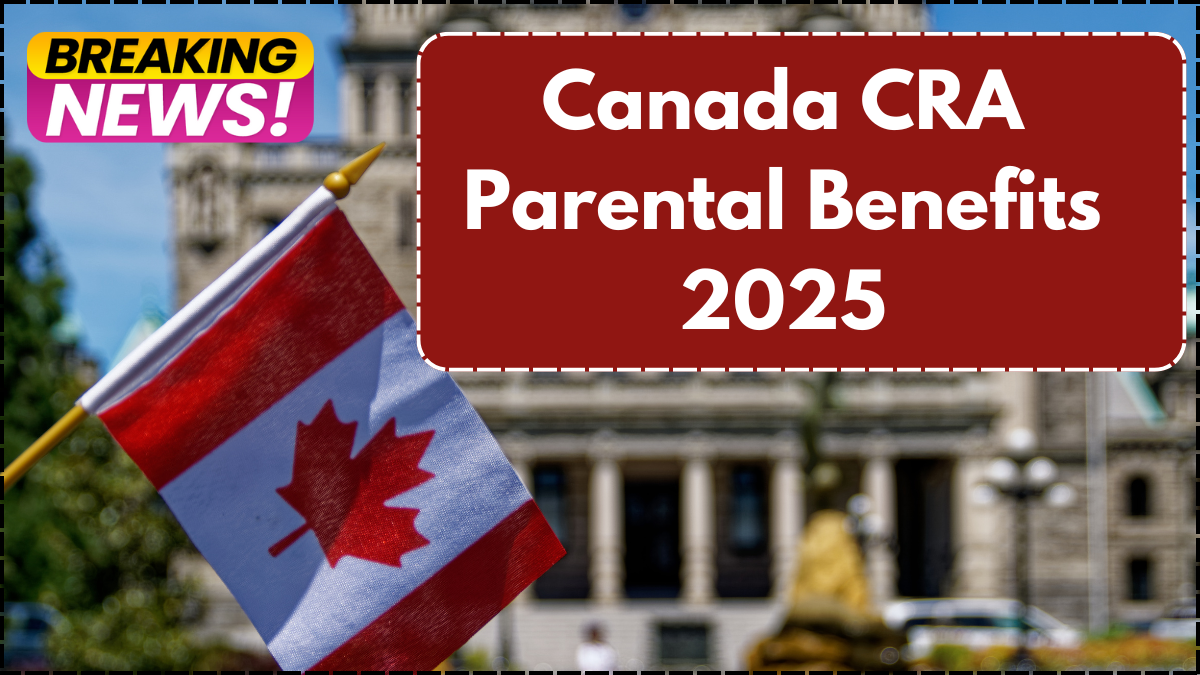If you’re expecting a child or already a parent in Canada, understanding the financial support available to you in 2025 is essential. The Canadian government offers various parental benefits to ease the financial strain of raising a child, ensuring families can focus on childcare without undue stress. This guide breaks down the eligibility, benefit amounts, application process, and payment schedules for parental benefits in 2025.

Overview of Canada’s Parental Benefits
Canada provides two primary financial assistance programs for parents:
- Employment Insurance (EI) Maternity and Parental Benefits – Managed by Service Canada, these benefits support new mothers and parents taking time off work to care for a newborn or adopted child.
- Canada Child Benefit (CCB) – A tax-free monthly payment administered by the Canada Revenue Agency (CRA) to assist families with the cost of raising children under 18.
Employment Insurance (EI) Maternity and Parental Benefits
Eligibility Criteria
To qualify for EI maternity or parental benefits, applicants must meet the following requirements:
- Employment Status: Must be employed in insurable work.
- Work Hours Requirement: At least 600 hours of insurable employment in the 52 weeks before applying or since the last EI claim.
- Income Reduction: A decrease in weekly earnings by at least 40% due to pregnancy or childcare responsibilities.
Types of EI Benefits & Payment Amounts
| Benefit Type | Duration | Payment Amount |
|---|---|---|
| Maternity Benefits | Up to 15 weeks | 55% of weekly earnings, max $695/week |
| Standard Parental Benefits | Up to 40 weeks (shared), max 35 weeks per parent | 55% of earnings, max $695/week |
| Extended Parental Benefits | Up to 69 weeks (shared), max 61 weeks per parent | 33% of earnings, max $417/week |
How to Apply for EI Benefits
- Timing: Apply as soon as you stop working to avoid delays.
- Application Method: Submit your application online via the Service Canada website.
- Required Documents:
- Social Insurance Number (SIN)
- Personal identification
- Banking details for direct deposit
- Record of Employment (ROE) from previous employers
- Post-Application Process:
- You will receive a confirmation along with a four-digit access code to track your claim.
- Payments are issued every two weeks.
Canada Child Benefit (CCB)
Who is Eligible?
To receive the CCB, you must:
- Be a resident of Canada for tax purposes.
- Be the primary caregiver of a child under 18.
- Be a Canadian citizen, permanent resident, or hold a valid temporary resident status.
- File annual tax returns, as benefits are based on income.
CCB Payment Amounts (July 2024 – June 2025)
| Child’s Age | Annual Benefit | Monthly Payment |
| Under 6 years | Up to $7,787 per child | ~$648.91 |
| 6 to 17 years | Up to $6,570 per child | ~$547.50 |
Note: CCB payments decrease for families with an adjusted family net income (AFNI) above $36,500.
How to Apply for the CCB
- Through Automated Benefits Application (if available in your province/territory when registering a birth).
- Online via CRA’s My Account.
- By mail using Form RC66 (Canada Child Benefits Application).
Parental Benefit Payment Dates in 2025
EI Benefits Payment Schedule
EI maternity and parental benefits are issued every two weeks. The payment schedule will be available upon approval.
Canada Child Benefit Payment Dates
| Month | Payment Date |
| January | January 20 |
| February | February 20 |
| March | March 20 |
| April | April 17 |
| May | May 20 |
| June | June 20 |
| July | July 18 |
| August | August 20 |
| September | September 19 |
| October | October 20 |
| November | November 20 |
| December | December 12 |
Smart Financial Planning for Parents
To maximize benefits and avoid common pitfalls, consider the following:
- Track Your Work Hours: Ensure you meet the 600-hour requirement for EI benefits.
- Budget for Parental Leave: Decide whether the standard or extended parental leave suits your financial situation.
- Apply Early: Submit applications promptly to prevent payment delays.
- Use Direct Deposit: Faster and more secure than paper checks.
- Keep All Records: Maintain copies of ROEs, benefit letters, and correspondence with Service Canada or CRA.
Conclusion
Parental benefits in Canada offer crucial financial support to families navigating the early years of raising a child. Understanding the eligibility requirements, payment amounts, and application procedures can help parents maximize these benefits. By planning ahead and staying informed, you can ensure a smooth experience when accessing financial assistance in 2025.
Also Read: CPP+OAS = XXXX? How Much Will You Get as OAS and CPP Combined?
Frequently Asked Questions (FAQs)
1. Can both parents receive EI parental benefits?
Yes, but they must share the total eligible weeks (up to 40 weeks for standard benefits and 69 weeks for extended benefits). One parent cannot exceed the maximum individual limit.
2. What happens if I return to work early?
Returning to work before your benefit period ends may impact your payments. Notify Service Canada immediately to avoid overpayments.
3. Do I need to reapply for the CCB every year?
No. However, both parents must file annual tax returns to continue receiving payments.
4. Is the Canada Child Benefit taxable?
No, the CCB is a tax-free benefit.
5. Can I receive both EI benefits and the CCB?
Yes. EI maternity/parental benefits and the CCB are separate programs, and eligible parents can receive both simultaneously.
Click here to know more.
Akesh is a furniture expert with years of experience in design and craftsmanship. Specializing in sustainable materials, he shares his expertise to help people create stylish and functional living spaces.
